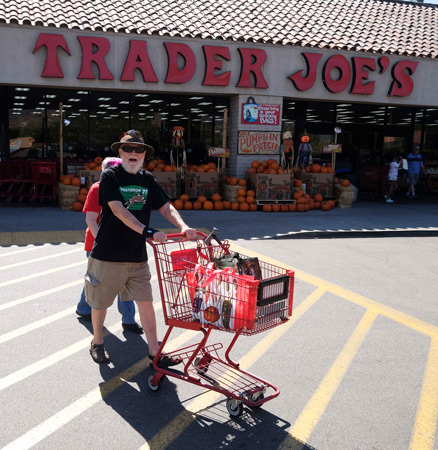“Creating a positive and inclusive shopping experience is our utmost priority, so we’re thrilled to be able to offer our customers this wonderful tool,” Trader Joe’s spokesperson Kenya Friend-Daniel said in a statement. “It’s a tremendous opportunity to further support our customers and their caregivers.”
The cards, available via Magnusmode’s MagnusCards app, provide step-by-step visual guidance for various activities, such as going to the library, taking a bus, cooking, sweeping floors or brushing teeth.
The cards related to Trader Joe’s describe what to expect at various stages of the shopping experience — reading a product label, standing in line, paying for groceries, talking to crew members in Hawaiian shirts, hearing the Trader Joe’s bell and getting help with carrying heavy shopping bags.
“Grocery stores can be challenging places for individuals with autism, but the basic necessity of buying food and the simple pleasure of selecting what you plan to eat is vital for all people,” Magnusmode founder and President Nadia Hamilton said in a statement. “Trader Joe’s MagnusCards provide support for a critical skill set that everyone needs and a fun experience that everyone deserves.”
While Trader Joe’s is the first grocery store chain to join the deck, other participating corporations and public agencies include Colgate-Palmolive Co., San Francisco International Airport, A&W Restaurants Inc., WestJet Airlines Ltd. and Royal Ontario Museum.
Hamilton created Magnusmode based on personal experience with her brother Troy, who has autism and who learned best through visual communication.
MagnusCards also show the pandemic-mandated social distancing and masking requirements, which will likely stay in place in the foreseeable future. The Monrovia-based grocer in March it said it will continue to require all customers to wear masks while shopping in its stores, with exception of young children and customers with a disability that precludes them from wearing a mask.
Trader Joe’s has 515 stores in 42 states and generates about $16 billion in annual revenue, according to a Business Journal estimate. The company provided 53,000 crew members with an additional $2 per hour “thank you” wage last year, and in February upped it to $4.

